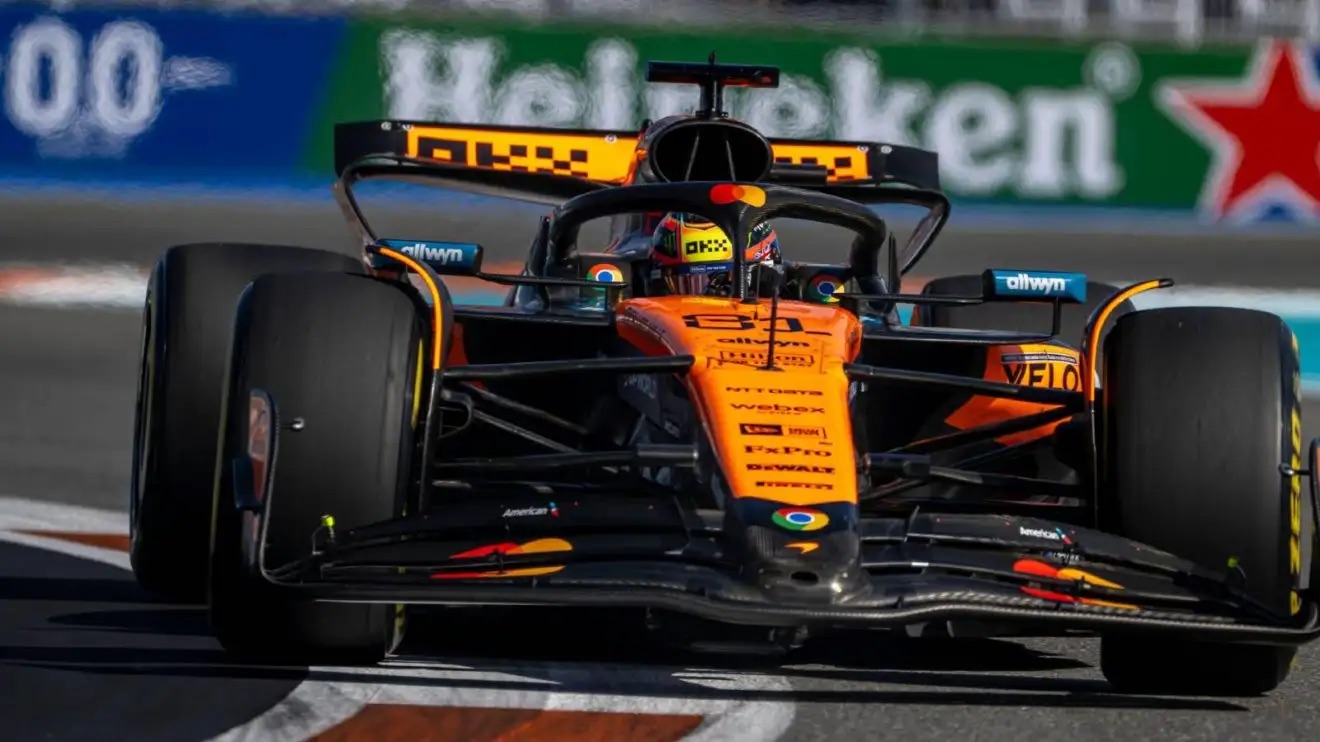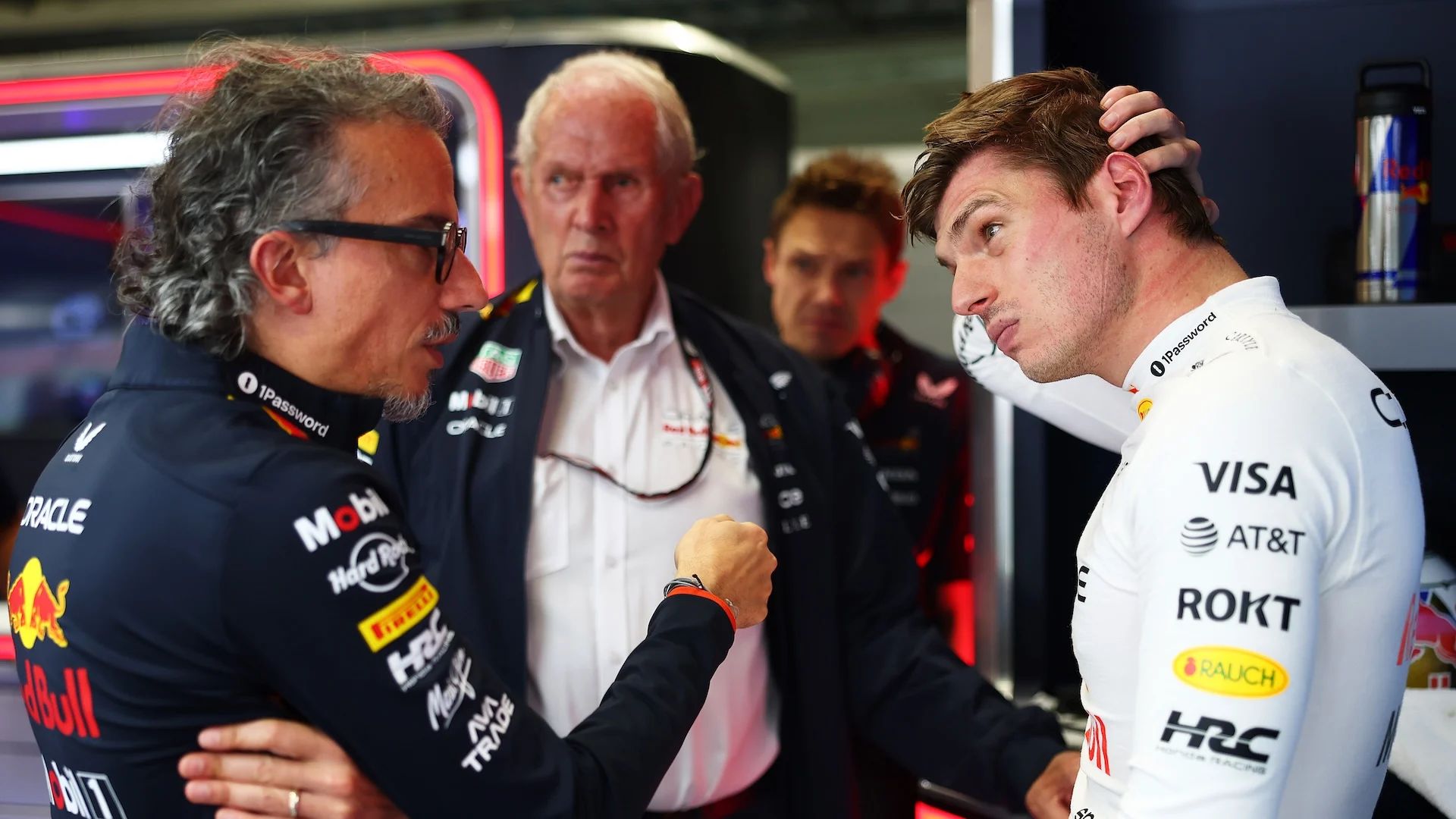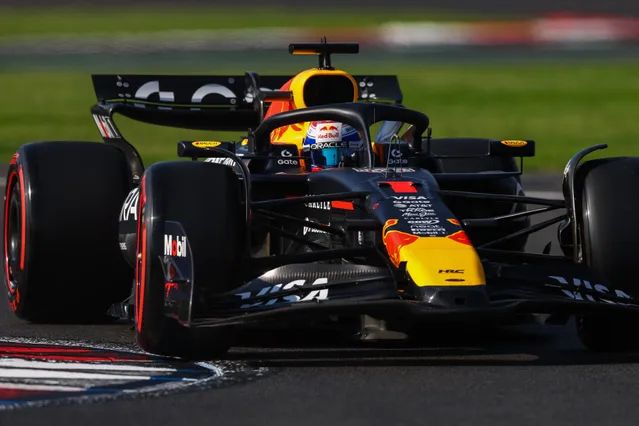A prominent motorsport engineer has proposed an intriguing theory regarding the source of McLaren’s advantage over other teams in the Formula 1 racing circuit. According to this expert, McLaren’s MCL39 car appears to possess an edge in terms of tire longevity, leaving rival teams perplexed. This advantage is particularly noticeable over the course of a race distance, whereas the Red Bull RB21 seems to be on par with the MCL39 in terms of single-lap performance.
The Miami Grand Prix provided a striking illustration of McLaren’s dominance, with Oscar Piastri and Lando Norris crossing the finish line over 30 seconds ahead of their nearest rival. The circuit’s high track temperatures and resultant high tire wear only served to exacerbate the gap between McLaren and the competition. It has become increasingly evident that McLaren’s advantage stems from its ability to maintain lower tire temperatures than its rivals, thereby extending the lifespan of its tires.
As the race unfolds and temperatures rise, McLaren’s advantage grows rather than diminishes. While rival teams struggle to manage their tire temperatures, McLaren’s car seems capable of sustaining its speed without succumbing to the same level of degradation. This has led to speculation about the underlying factors contributing to McLaren’s success.
One theory that has gained traction is that McLaren’s brake system, particularly the rear brakes, is designed in such a way that it keeps the brake drums cooler than those of its competitors. This, in turn, reduces the amount of heat transferred to the tires, thereby prolonging their lifespan. In an effort to uncover the secrets behind McLaren’s brake design, rival teams have employed thermal cameras to monitor the temperature of McLaren’s brake drums. The findings have been shared with the FIA, which conducted a thorough examination of the MCL39’s rear brake design following the Miami Grand Prix.
The FIA’s post-race checks involved a meticulous examination of the McLaren car’s brake system, with a focus on the rear brake design. Although the governing body has yet to officially confirm its findings, indications suggest that McLaren’s design has been deemed legal. Assuming this is the case, the FIA will not disclose further details about its investigation.
The implications of McLaren’s innovative brake design are significant. By maintaining cooler brake drums, the team is able to reduce the heat transferred to the tires, thereby gaining a crucial advantage in terms of tire longevity. This clever engineering solution has allowed McLaren to stay ahead of the competition, particularly in high-temperature conditions.
As the Formula 1 season progresses, it will be fascinating to see how rival teams respond to McLaren’s innovative brake design. Will they be able to replicate this solution, or will McLaren’s head start prove insurmountable? One thing is certain: the team’s dedication to innovative engineering and clever design has paid dividends, and it will be intriguing to see how this plays out in the remainder of the season.
The use of thermal cameras by rival teams to monitor McLaren’s brake temperatures highlights the level of scrutiny and attention to detail that exists in the world of Formula 1. Every aspect of the car’s design and performance is subject to intense examination, and teams are constantly seeking ways to gain a competitive edge.
In conclusion, McLaren’s advantage in tire longevity appears to be rooted in its innovative brake design, which allows the team to maintain lower tire temperatures and extend the lifespan of its tires. While the FIA’s investigation has deemed the design legal, it remains to be seen how rival teams will respond to this development. As the season unfolds, the battle for supremacy in Formula 1 will undoubtedly be shaped by the ongoing quest for innovative solutions and clever engineering.




